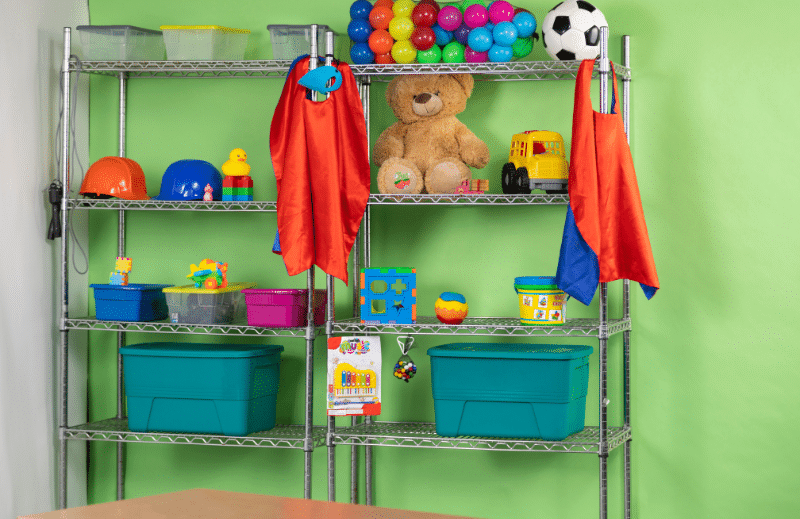No products in the cart.
Organize
Organizing Creative Spaces for Kids: 5 Key Tips

Children thrive in environments that inspire creativity, innovation, and learning. One of the best gifts you can give your child is a dedicated space for exploration and artistic expression. Crafting corners supports your child’s developmental needs by providing them with an outlet for their imaginative ideas. Here are 5 essential tips for organizing an effective and inspiring crafting corner for kids.
1. Designate a Specific Area
Whether it’s a small desk in their room, a corner of the living room, or a segment of the playroom, establishing a specific area for crafting is crucial. This not only gives importance to their creative work but also helps keep supplies from spreading across the house.
2. Use Accessible Storage Solutions
Children are more likely to use their crafting area if they can easily access materials. Use clear, labeled bins, and low shelves so children can see and reach their supplies. Consider a rolling cart for supplies that can be tucked away when not in use but is easily accessible during craft time.
3. Create a Display Space
Encourage your child’s creativity by showing you value their work. Allocate wall space or a bulletin board near their crafting corner for displaying finished projects. This public affirmation motivates them to continue creating and exploring their abilities.
4. Keep it Age Appropriate
The crafting corner should evolve with your child. For young children, non-toxic, washable materials are a must, and tools should be age-appropriate. As they grow, introduce more sophisticated materials and tools, always prioritizing safety.
5. Incorporate Organizational Habits
Teach your child to clean up after each crafting session. Simple habits like putting caps back on markers, returning scissors to their designated spot, and recycling scraps not only keep the space tidy but also instill a sense of responsibility and respect for their creative environment.
Conclusion
A crafting corner provides a special place for your child to express themselves creatively, without cluttering the rest of your home. By following these five tips, you can create an organized, stimulating space that encourages your child to explore, imagine, and create. Remember, the goal is to foster their creative journey, so the space should grow and adapt to their changing interests and abilities. With a little planning and organization, you can unlock a world of possibilities for your young artist.

